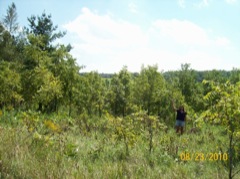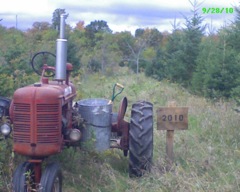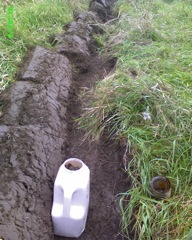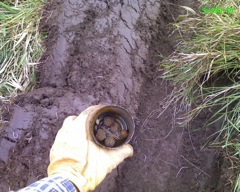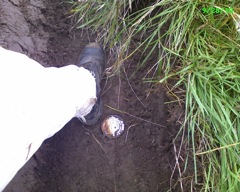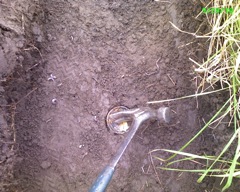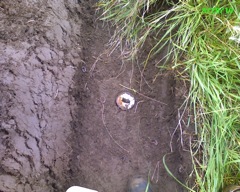2010:
Abstract:
2010 has provided north-western Wisconsin with a nearly perfect growing year for trees (and everything else). Plenty of moisture throughout the growing season and with warm (but not hot) temperatures. The plantation has continued to grow in height but, most notably, this year has seen a broadening or thickening of the pines, in general, and the walnut (in the 'Five Miles' section). This has served to further close in the canopy moving the plantation towards the much desired end of converting field to forest.
We continue to see vigorous growth in the pines and spruce throughout the whole plantation. Early (successful) plantings are generally 10 to 20 feet tall. We have managed to prune the majority of the White Pine for prevention of White Pine Blister Rust. The areas where we have filled in gaps by transplanted pine and spruce are beginning to overtop the weeds.
The general walnut population (where we direct seeded in the 40 acre corn field) is still, for the most part, marking time. Trees are barely surviving; growing during the season but dying back (or chewed back) over the winter and spring. There are areas where trees are beginning to 'break through' the winter kill and browse and show sustained growth.
There are many areas of Red Oak (from early transplanting) that are finally over toping the browse. This is an ugly process where they are forced into a bush habit by deer browse until one dominate leader is missed by the deer and grow above a deer's easy reach.
One area that has taken off has been the Hybrid Poplar grove. It's not very obvious in the above panorama because the leaves haven't emerged but in the right center is a small area of light brown that is nearly as tall as the background woods. This is about an acre of hybrid poplar that we planted in the late 90's. We have done nothing special (cultivation or weed control) to help these along so this degree of success is heartening.
Work continues on the following:
- Fill gaps in the plantation by developing and refining strategies for establishing stands in difficult areas.
- Site prep and weed control.
- Direct seeding and transplanting nursery stock (our private nursery - we no longer buy from commercial or DNR nurseries).
- Prune and thin the white pines for disease control (white pine blister rust).
- Seed collection and establishment of nursery stock.
- Manage brush and invasive species.
Pictures and notes from 2010 (click on each image for a larger view):
Progress of first (5-Mile) Walnut planting (August 23, 2010)
Debi is standing in Walnuts on hillside to give a sense of scale. Trees on the right (and center) were some of the first trees we planted from seed in 2005(and from transplants grown from seed in River Falls). Trees on the left are some of the old windbreak west of the barn.
I have taken pictures from this spot over the years in order to show the progress of our handy work. (These prior shots will be posted shortly.)
Filling in the gaps - an ongoing process.
Fall seeding of White Oak acorns (September 28, 2010).
2010 wasn't a good year for white oak but I still found enough to fill a 2 gallon jug. I planted these in a gap in the first planting of Walnut and Pine on the old pasture land south-west facing hillside.
I plowed a single furrow down the gap and tried a technique for planting acorns that I read about somewhere that is supposed to protect the nut from browsers (deer, mice, squirrels, etc.) until the seedling can get established.
Put a few acorns in an old tin can ( more than one in case one or more are no good - you can always thin them out later ) ...
Put the can - upside down - in bottom of furrow (with acorns inside) and Stomp in down into the dirt with heel of boot (to keep deer from digging it out) ....
Now knock a hole in the can to give the new seedling a place to grow out of the can ....
by the time the seedling gets too big for the hole, the can will have rusted away and should not girdle the tree.
